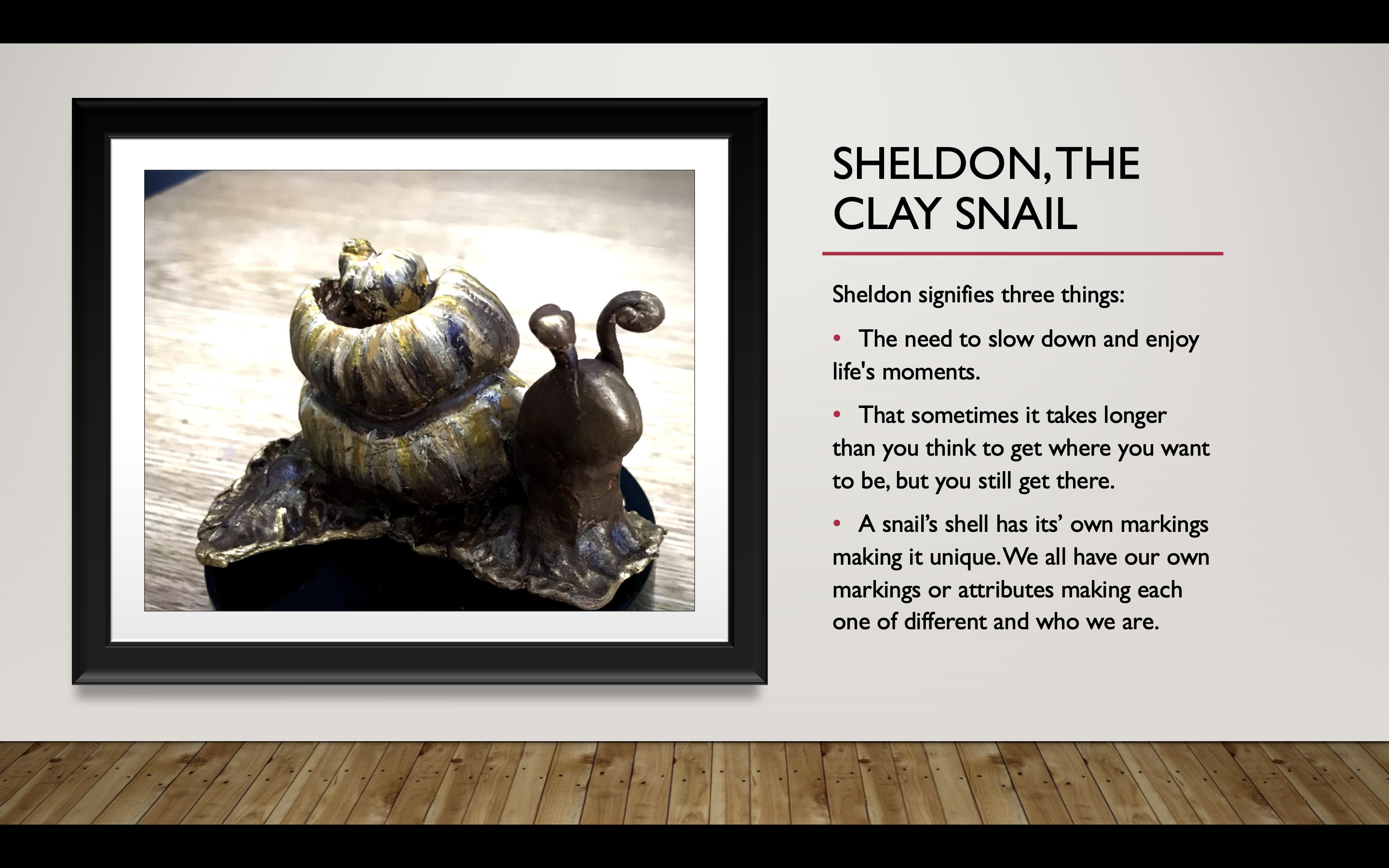My bold Journey
by Annette B
As a former family carer for a parent with mixed dementia (complicated by several debilitating chronic conditions), I witnessed that space between silence and speech – both in my mother and in my self, and between the two of us. And so, I have become interested in learning about the experiences of advanced dementia.
During my explorations, I came across the online bold (bringing out leaders in dementia) course and joined Cohort 8 via Zoom, as described in the last issue of DementiArts. For six weeks, I looked forward to “Flourishing Fridays,” when I had the opportunity to get out of my mind, into my body, into the world around me.
Each week we received an envelope with instructions to make something and suggestions for reflections, which focussed on our bodily senses* to explore our relationship with the world around us.

Poetry & Identity: “This is Me” (Week 1)
One of the first activities we did was a hand poem, something anyone – young or old – can do. It is important for people to know who we are, especially if we are not able to use words one day. Trace your hand on paper and ask yourself five “what is” questions, then ask yourself what kinds of emotions and images your answers evoke. Combine them into phrases to form a poem, maybe something like this?:


As a form of reflection, we had several opportunities to try our hand at composing a haiku (Japanese poetry form) based on syllables per line (5-7-5). No rhyming or punctuation needed! Can be done individually or collaboratively! Here’s an example:
writing a haiku
blending
optimism with
love,
delight and joy
Collage & Comfort: “A Tree of Words in a Forest of Phrases” (Week 3)
I started a collage portraying a tree of words, and I’m still working on it. Like any relationship, this collage became an ongoing process. As the dementia progressed, I noticed how comforting familiar phrases were to my mother in our increasingly fragmented conversations. I often repeated her parental words of insight or quirky comments, whenever appropriate. She would nod with approval and affirmation. We all need to hear familiar, personal and positive phrases for a sense of certainty, security and comfort; only then can we FLOURISH – whether we have dementia or not. See James McKillop’s poetic explanation of this term in the poem below.

Clay & Companionship: “Sniggy the Snail” (Week 5)

We were also given some clay, to help us transfer and transform our thoughts in our minds into an external object. We sensed the give-and-take nature of our touch as we moulded and shaped our objects, becoming aware of how touch might affect others when we interact with them. As you can see from the photo, my sculpting talents resulted in a basic sausage snail. As you can also see, one of Sniggy’s tentacles broke off during one of his journeys, creating a challenge for him to navigate this world on his own. So, he was happy to find a co-traveller in Sheldon the Snail (pictured below) who values the sparkly dust Sniggy picked up on his shell during his explorations. Our feelers are fragile and we all need a trusted companion in life – whether we have dementia or not.

Pour Painting & Possibility: “Salt, Sparkles, and Six Pieces of String”
At the end of the bold course, I participated in Suzie Beresford’s research project. As described on pages 14-16 in the last issue of DementiArts, we each created a collage to represent our bold journey.

I did a pour painting without words, because often we have no words for the complexity of our experiences. The six pieces of string are equal in length, each representing a week of bold blethering and get-togethering, communicating and community-building. Sometimes the strings connect, sometimes they just end up as loose strands, for later.
I used the back of a freebie poster, sprayed water on it, then randomly dropped blobs of yellow, blue, and red paint onto it. I turned the paper six times to the right and six times to the left, letting the primary colours collide until I was happy with the new colours. Using a spoon handle, I scraped in some loops to represent the cul-de-sacs of life.
I then added salt and sparkles, because that’s what we do in life: cry and shine, in the darkest and lightest moments of our being. It is the process of doing and being with others that holds creative opportunities for joy on our journey, sometimes by the wayside, in unexpected corners – whether we have dementia or not.
Footnotes:
* See Agnes Houston’s useful findings and insights in Think Dementia, Think Sensory
** For language-based communication tips, click here.
To sign-up to our monthly bold Newsletter click here!
To join our waiting list for potential future bold programmes please sign-up here!
